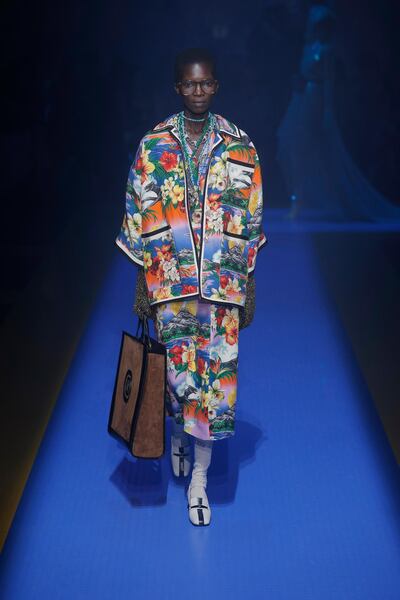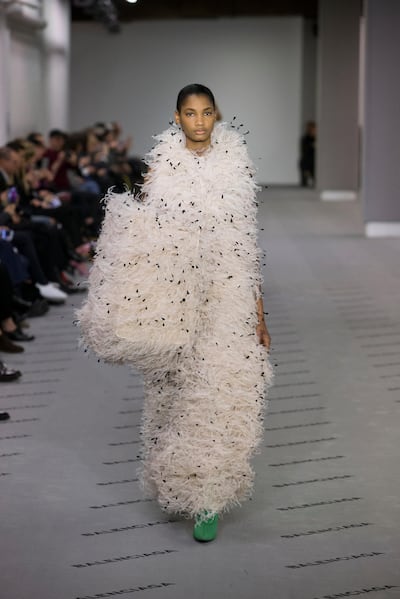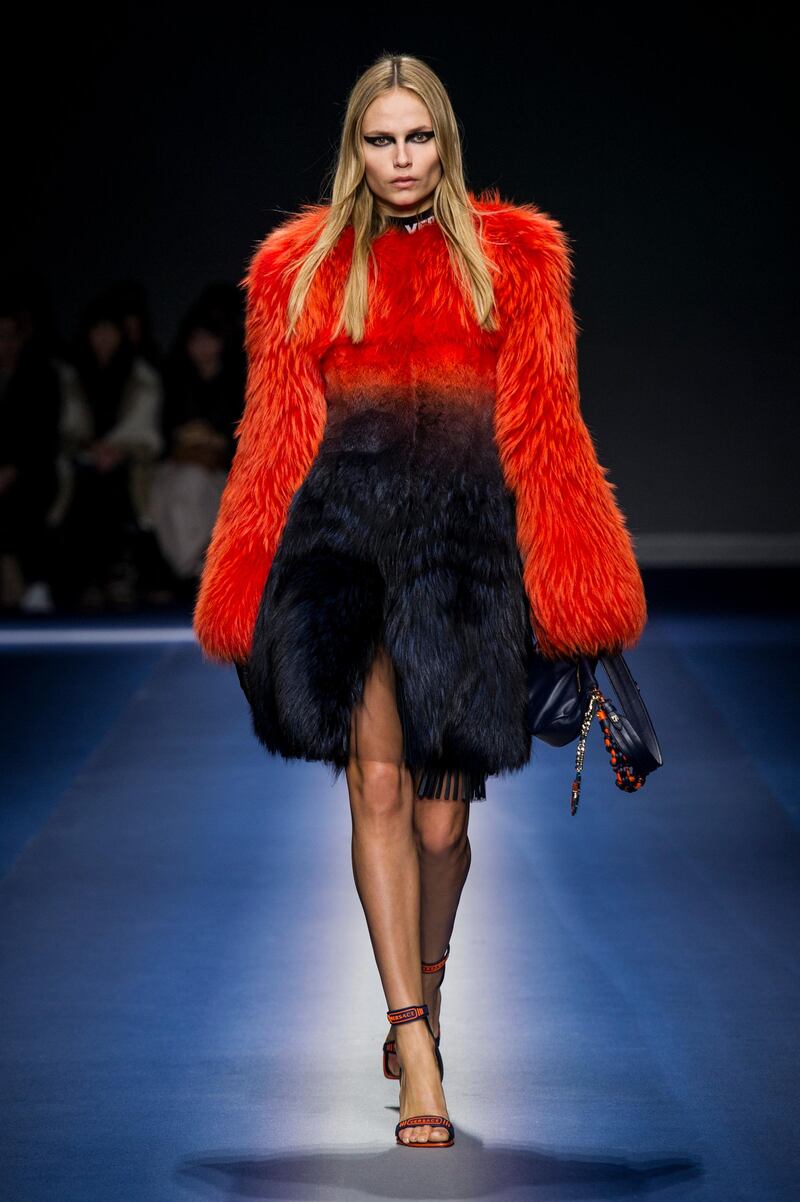Depending on your viewpoint, you might think of fur in terms of supple, super-soft coats that capture the glamour of the silver screen; or it might be synonymous with cruel vanity, stripped off the back of a living animal, which likely lived a short and brutal life, and died a painful and protracted death.
Either way, fur is back in the headlines, thanks to a couple of big announcements from the fashion industry: Gucci and Michael Kors have both very publically vowed to go fur-free this year. At the 2017 Kering Talk in October, Marco Bizzarri, Gucci’s president and chief executive, announced that as of spring 2018, the brand would stop using fur and would auction off its existing fur stock, giving the proceeds to animal welfare groups.
Declaring social responsibility to be one of Gucci’s core values, Bizzarri pledged to “continue to strive to do better for the environment and animals”, adding in a statement that “Gucci will no longer use, promote or publicise animal fur beginning with its spring/summer 2018 collection. Thanks to a long term partnership with LAV [an Italian animal rights organisation] and The Humane Society, Gucci joins the Fur Free Alliance, which focuses on the deprivation and cruelty suffered by fur-bearing animals both in wild trapping and industrial fur farming.”
Bizzarri went on to explain that “in selecting a new creative director, I wanted to find someone who shared a belief in the importance of the same values. I sensed that immediately on meeting Alessandro [Michele] for the first time.”

Gucci is the latest and arguably the most high-profile label to go fur-free. Under Michele, Gucci has undergone a dramatic shift in its aesthetic, drawing praise from critics and consumers alike. With sales soaring, it is one of the major forces shaping fashion today.
Alexandra Shulman, the ex-editor-in-chief of British Vogue (the magazine was resolutely fur-free under her watch) offers some industry insight. "I think it is an intriguing time for Gucci to make that statement, because one of its biggest-selling things has been the fur-lined backless loafers. So it's a big statement. They are in a position of being a brand that people are following, so it will be interesting to see if there is any kind of knock-on effect."
With Gucci’s every move currently being copied, it will indeed be interesting to see if more companies will follow its fur-free lead. In truth, however, Gucci is late to the party, trailing far behind fellow Kering group label Stella McCartney, which was founded in 2001 as a 100 per cent animal-cruelty-free company. American brand Ralph Lauren declared itself fur-free in 2006, followed by Vivienne Westwood and Tommy Hilfiger in 2007. Even the London department store Selfridges stopped stocking fur in 2005.
More recently, Hugo Boss backed away from fur in 2015, while luxury house Giorgio Armani declared itself anti-fur in 2016, followed by the vast online company Yoox Net-a-Porter, which has vowed to stop stocking fur this year. In December, Michael Kors and sister company Jimmy Choo declared that they would go fur-free, with CEO John Idol stating that: “This decision marks a new chapter as our company continues to evolve its use of innovative materials.”
It will be interesting to see if this sea change will stick, since this is not the first time that fur has swung out of favour. In the late 1980s and 1990s, there was a spectacular backlash against fur. Greenpeace’s now famous 1986 campaign, “It takes up to 40 dumb animals to make a fur coat, but only one to wear it” was hard-hitting, and featured a woman dragging a blood-soaked fur coat behind her.
Meanwhile, Peta’s 1996 “I’d rather go naked than wear fur” campaign used supermodels Christy Turlington, Elle Macpherson and Naomi Campbell to shed light on the unpalatable reality of fur. Brigitte Bardot lent her star power to protest the annual baby seal cull in Canada, all of which resulted in Generation X’ers (those born between 1965 and 1980) turning away en masse from fur, despite mothers and grandmothers having viewed it as the ultimate luxury.

Even in Russia, where fur is prized for both its perceived status and practicality, production of mink pelts reportedly dropped by 10 million in the decade leading up to 2002. Faced with a rapidly collapsing market, the fur industry was thrown into crisis.
Fast forward to 2010, however, and fur was back in vogue, fuelled by rapidly increasing wealth and the emergence of a new, younger generation who were born after the anti-fur wave, and for whom this was a new and exciting material. Anna Wintour, editor of US Vogue, made sure the magazine was consistently pro-fur, while big fashion houses such as Christian Dior, Hermès, Louis Vuitton, Chanel and Fendi have all been resolute in using fur. Karl Lagerfeld, creative director for both Chanel and Fendi, has declared the discussion about fur to be "childish".
When Godfrey Deeny, industry veteran and international editor-in-chief of Fashion Network, visited Dubai for Fashion Forward last year, I quizzed him about his view of fur. “Personally, I wear fur,” he says. “I have pieces by Galliano and Saint Laurent that are great pieces, so personally I have no problem with fur.” And when asked about the future of fur, Deeny was adamant: “I think in terms of quality and luxury, there is no question that fur has a place in fashion. There is still an appetite for it.”
Top models Gigi, Bella, Cara and Adwoa have all walked for Fendi, who’s double F motif stands for “fun fur”, while stars such as Rihanna, Jennifer Lopez and the Kardashian clan are routinely seen in furs, as is Beyoncé, who famously donned fox fur to visit a vegan restaurant in 2013. The Fur Council of Canada has declared fur to be a “natural, renewable and sustainable resource”, while the International Fur Institute is vocal about requiring its 56 members across 40 countries to adhere to a tranche of strict standards regarding animal welfare and environmental protection. As recently as October, Business of Fashion wrote an article entitled: Will Millennials Boost the Fur Trade?
They might, but the figures linked to fur still make for grim reading. Conservative numbers suggest that 30 million animals are killed each year for their skins, with 85 per cent coming from fur farms and the remaining 15 per cent trapped in the wild. Methods for trapping wild animals are at best described as primitive, with leg-hold, conibear and wire snares designed to catch but not kill, meaning an animal can languish for days before it is killed.
Farmed fur animals are held in cages – which are often woefully small – and there is documented behaviour of pacing, swaying and biting, all behaviours that are associated with distress. Last year, stories came to light of Finnish fur farms deliberately overfeeding animals, taking them to as much as five times their natural weight, to produce larger skins. Fur farming is currently banned in the UK, Austria and Croatia.
Beyond concerns about animal cruelty, the fashion industry is one of the biggest polluters in the world and fur only adds to the problem. Despite the soft and fluffy result, fur requires the use of toxic metals to halt decomposition (like any skin, once removed from the owner, it begins to rot), and to create different colours. Chemicals used include chromium (listed as a human carcinogen by the National Toxicology Programme in the United States), and formaldehyde, which is linked to lymphomas and leukaemia and has been listed as a human carcinogen since 2011 by the US Department of Health.
_________________
Read more:
[ Call for change: how our fashion choices affect the environment ]
[ Fashion year in review: The stand-out moments of 2017 ]
[ The resurgence of fur in fashion – real and faux ]
_________________
Bleaches and dyes contain hexavalent chromium, a noxious chemical linked by the US National Cancer Institute to cancer of lungs and the nasal cavity. Recent studies in Italy, Germany and the Netherlands have discovered traces of both chromium and formaldehyde in fur trim on children's clothing.
In China, the picture is far bleaker. The country produces millions of pelts per year and there have been numerous documented cases of animals being skinned alive. As skin starts to contract after death, unscrupulous farms are opting for the easier route of only stunning animals prior to skinning. There are also multiple documented cases of Chinese farms passing cat and dog fur off as something more expensive.
On the plus side, technological solutions may be just around the corner. Last October, Modern Meadow launched a bio-engineered leather called Zoa, which is a lab-grown version of leather, identical even down to the smell. Start-up company Vitro Labs has begun work on BioFur, a lab-grown series of leathers and furs that may one day dispense with the need for animal-harvested skins altogether. Although still in its infancy, the technology already exists, as proven by the Riken Centre for Developmental Biology in Japan, which in 2016 successfully grew mouse skin cells, complete with fur.
“New technology presents unlimited possibilities in terms of textiles and it would be a mistake for us not to be at the forefront of this,” says Gucci’s Bizzarri. The fur industry may be worth an estimated US$30 billion (Dh110 billion) a year worldwide, but Bizzarri has eyes very firmly focused on the future. “Do you think using furs today is still modern?” he asked his audience at the Kering Talk. “I don’t think it’s still modern and that’s the reason why we decided not to do that.”










